I have to admit that the first time I saw a prairie wasn't until the spring of 2007, when my wife and I were looking for a wedding reception venue. We ended up at Spring Creek Prairie, a never-plowed 800-acre remnant 20 minutes southwest of our city. I'm not sure how I heard of it, but I know that ever since then, the prairie has had a special place in the lives of my wife and I, especially as we think about buying some acreage and starting prairie-inspired businesses.
Here in town there are plans to create a 7-mile prairie trail from a bison park near our home down to Spring Creek. As only 1 percent of the tall-grass prairie remains, I wonder how my backyard could be an extended part of this trail — and what my small suburban lot means in a fragmented world of wildlife and people where gardens have become refuges for us all.
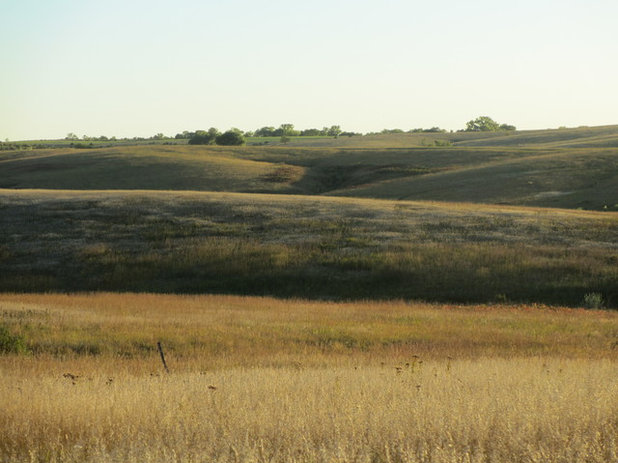
Benjamin Vogt / Monarch Gardens
It's hard to imagine just how big the prairie used to be in the North American Great Plains and Midwest — covering nearly 50 percent of the U.S. — and how quickly it vanished over the course of a hundred years or so. When I visit refuges in Kansas, Oklahoma and Iowa, I feel something I never feel elsewhere — that distance to the horizon that comforts me as the grass sways like waves, the birds leaping through folds of bluestem, insects bouncing from wild bloom to wild bloom. I want some of that in my landscape. I want prairie back, and maybe if I'm lucky I'll see the birds and insects come home, too.
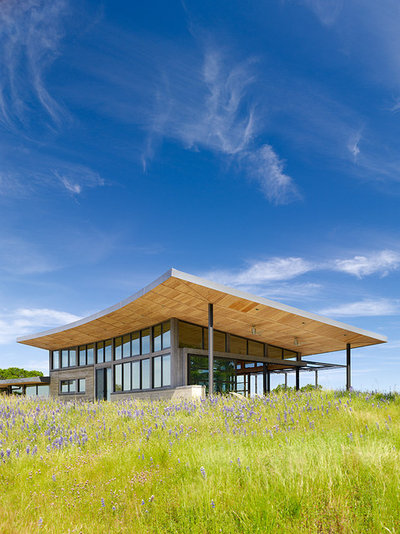
Feldman Architecture, Inc.
If you have a couple of acres that are full of weeds, the easiest way to prep for a prairie is to either till the soil to expose the roots to air or broadcast the area with something like Roundup. I know it's not ideal to use the latter, but sometimes I wonder if the ends justifies the means — you need a clean slate to spread a prairie seed mix, and that mix must be spread on bare soil. Many of those seeds also need a period of cold, wet winter weather to germinate in late spring, which is why a late-fall planting (after a few freezes) is perfect.
Here's a detailed prairie establishment guide by Prairie Nursery — from prairie prep to seeding, establishment and maintenance.
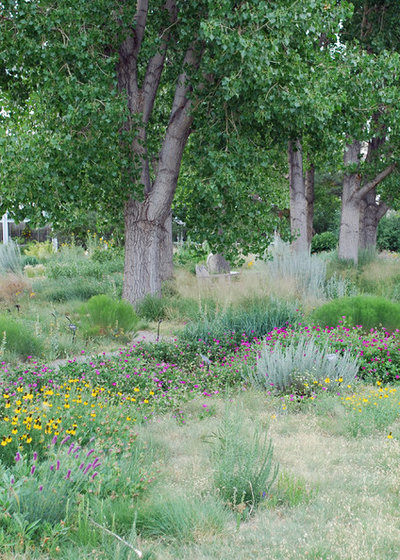
Jocelyn H. Chilvers
OK, you don't have a few acres; maybe you have a smaller suburban lot. You can turn that into prairie too, with seed mixes, which are the most economical way to get a diverse planting — though it will take a few years to establish a prairie, and you'll have to spot check for weeds until the natives crowd them out. After that the plants will be pretty low maintenance, requiring just an early-spring mowing (or a burning if you can do it safely).
Often spaces under trees are bare, and grass can't grow, but there are shade-loving wildflowers and grasses out there — two of my favorite places to find those plants are the searchable database at the Lady Bird Johnson Wildflower Center and the online shop at Prairie Moon Nursery.
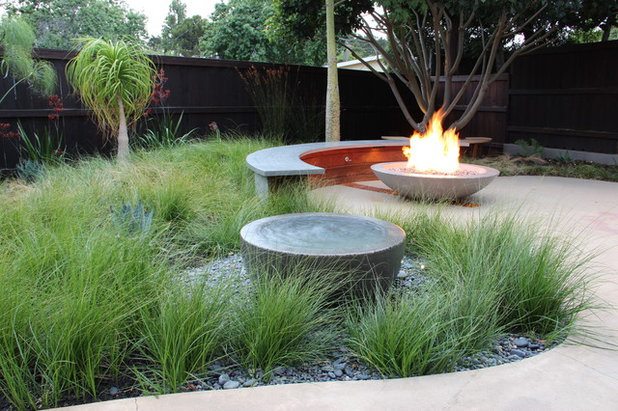
Gardens by Gabriel, Inc.
And now some of you are thinking, "Hey, I don't have any acreage or a suburban lot, and all I want is a low-maintenance something on a problem area that gets lots of sun and dries out often."
Maybe you can mass some
sideoats grama (
Bouteloua curtipendula) or
prairie dropseed (
Sporobolus heterolepis). Those are two of my favorite dry-loving prairie shortgrass plants. If you like taller grasses, think about some stands of
bluestem (
Andropogon spp) or
Indian grass (
Sorghastrum nutans) — you could even have the taller grasses in the back and the shorter ones up front to mimic a more traditional garden design. Toss in some
coneflowers, blue sage or liatris (
Liatris aspera) for a few pops of blooming color from early summer to midautumn, and you've started cooking up a prairie.
If you have a shadier area, look into native sedges — they look like grasses but aren't as tall.
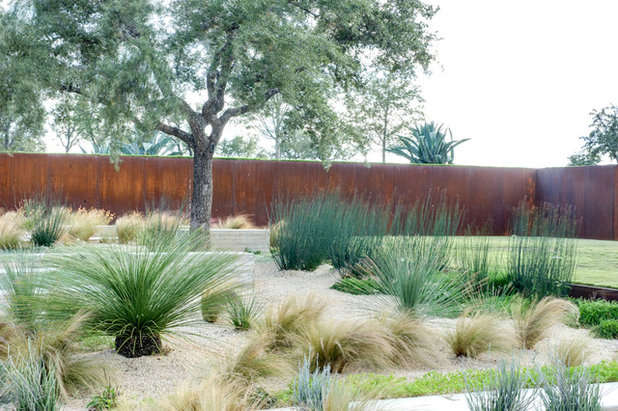
D-CRAIN Design and Construction
You can also get really minimalist if you want. In this image various plants are spread almost like they would be in the arid high plains wild — a specimen here, a drift there. Designing a prairie garden can spur some cool creativity, and I strongly believe any aesthetic can be achieved using just prairie grasses and wildflowers.
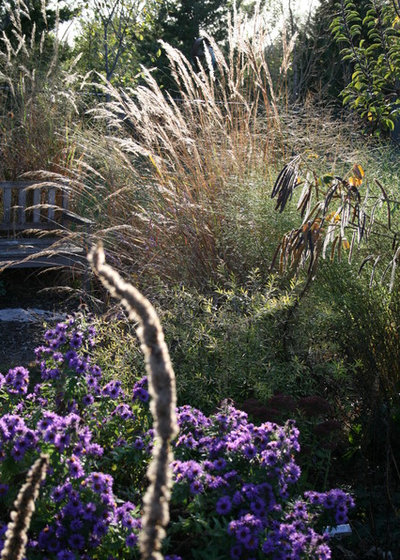
Benjamin Vogt / Monarch Gardens
Here's a midfall scene from my own garden. Up front is a
liatris gone to seed, behind it is a
'Purple Dome' New England aster cultivar, and further back is a stand of tall Indian grass. This design is a bridge between the formal and informal look that I think prairie plants lend themselves to quite well.
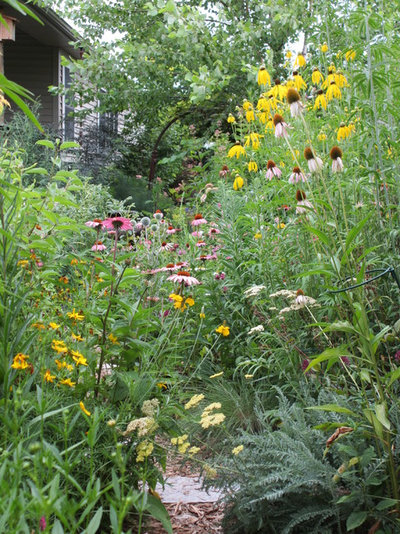
Benjamin Vogt / Monarch Gardens
Here's another view from a completely different part of my garden, in USDA zone 5 (find your zone). Above is a stand of
gray-headed coneflower,
purple coneflower,
long-headed coneflower and
yarrow. Sprinkled in there are some
zizia,
little bluestem, liatris, milkweed and a host of other prairie plants in a 40-square-foot bed of dashing color from May to October.
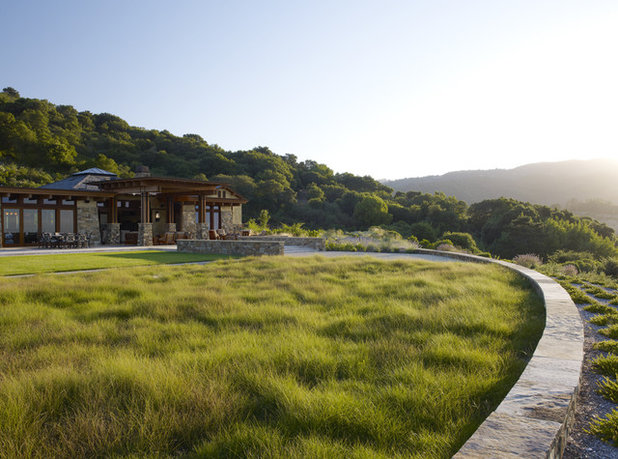
Christopher Yates Landscape Architecture
If you just want a lawn replacement, a seeding of
buffalo grass or
blue grama works great for a 6- to 8-inch cover you can even mow once in a while if you like (but consider letting it grow to form a natural, wavy habit). Prairies in our landscapes don't have to be tall or complex or messy.
Great grasses for a new lawn
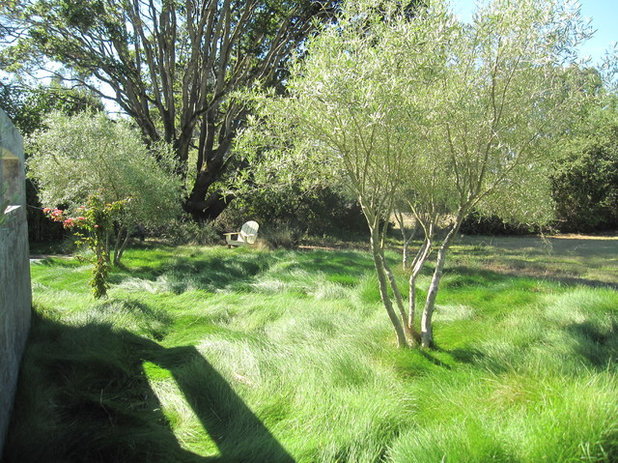
Kathleen Shaeffer Design, Exterior Spaces
If you live in a cooler climate or at higher elevation, you can stretch the rules a bit and let
red fescue grow long and create undulating waves 4 to 6 inches tall. A few well-placed trees in the grass create a park- or prairie-like feel and are very low maintenance.
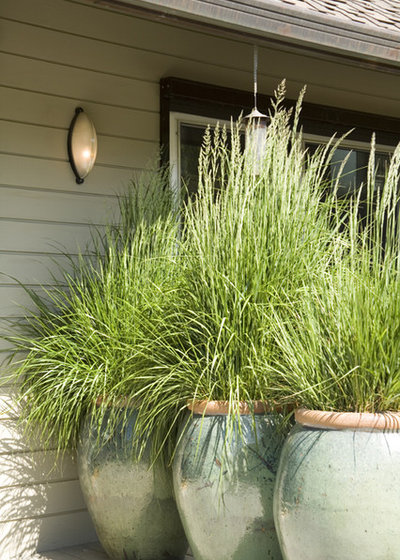
Mark English Architects, AIA
Why not give some pots the prairie look? You could seed the containers, but buying some nursery plants might be best for you, so you get a quicker bang for your buck.
Another planting suggestion: Have fun and design one container with some
little bluestem (
Schizachyrium scoparium) underplanted with purple prairie clover or dwarf blazing star (
Liatris cylindracea). You might need to bring the container into the garage or shed for winter so the roots don't freeze or dry out, especially if you live in zone 5 or a cooler climate.
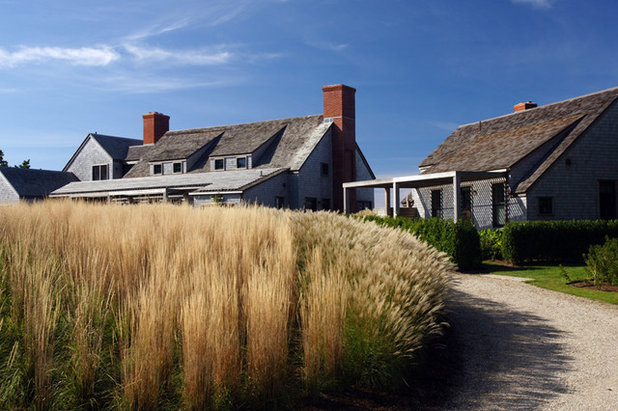
There used to be all kinds of prairies in the U.S.: inland, lowland, sand and even some on the Gulf Coast from Texas to Florida.
There are prairie plants for almost any type of environment, from wet to dry. You can go all out with a diverse seed mix, create traditional beds or get modern with just grasses. Match the design to your house and maybe pick up Catherine Zimmerman's book on meadow gardening,
Urban and Suburban Meadows.
Prairie plants are low maintenance when properly sited, and once established feed all kinds of beneficial pollinating insects, improve soil fertility and restore a bit of what was once here for lots of species that still depend on native prairie plant communities.
Each small garden landscape, when connected, becomes a prairie corridor for wonder and for life you maybe didn't know was there until you welcomed it back home.





